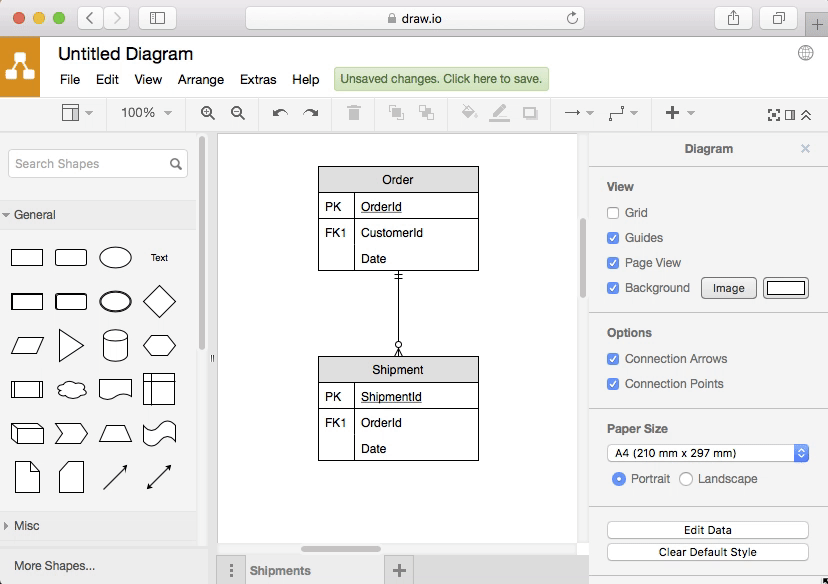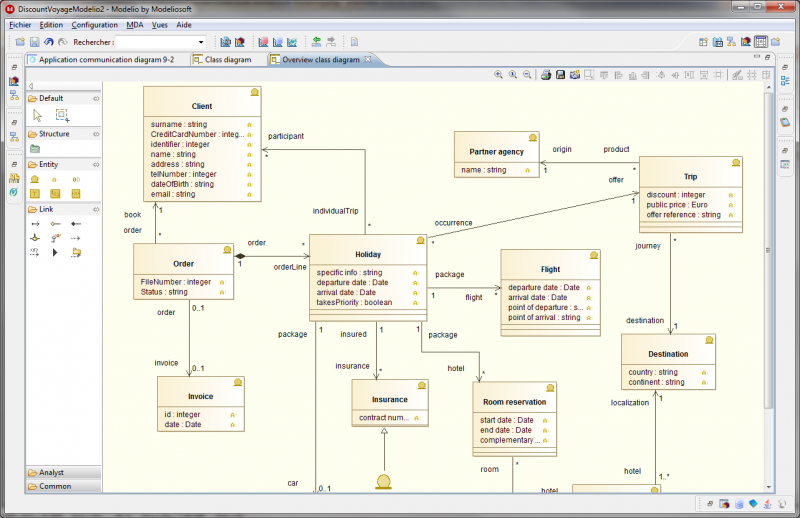Database design illustrates a detailed data model of a database also known as the database schema. It shows the various tables that are in the system and the relationships between those tables. Before doing the actual database design you need to create the entity relationship diagrams. It has a nice schema visualization tool that also enables you do design with ER diagrams. Wwwsqldesigner WWW SQL Designer allows you to draw and create database schemas (E-R diagrams) directly in browser, without the need for any external programs.

- See full list on mssqltips.com.
- Our ER diagram tool simplifies database modeling, whether your ERDs are conceptual or physical. With dedicated shape libraries, drag and drop standard ERD symbols onto the canvas within seconds. Lucidchart is the essential ERD tool to quickly differentiate relationships, entities, and their attributes. Include tables, fields, and primary.
By: Jim Evans | Updated: 2019-12-17 | Comments (6) | Related: More >Database Design
Problem
Often sophisticated tools such as ER/Studio or ERWIN are used tocreate databasediagrams, but these are not necessary to create simple database diagrams, printthem or convert to a Microsoft Word document or to PDF to save and share withyour team. In thistip we will walk through how to create a database diagram usingSQL Server Management Studio (SSMS).
Solution
Using Microsoft’s sample database WideWorldImporters, I will demonstratecreating a simple database diagram of a limited number of tables focusing on Invoicerelated tables in the database. I’ll then copy the Database Diagramto MS Word so it can be saved and printed.
Step 1 – New Database Diagram using SQL Server Management Studio
In SSMS under the database WideWorldImporters, right click 'Database Diagrams'and select 'New Database Diagram'.
Step 2 – From Database Diagram – Select a table
From the Database Diagrams tool dialog scroll and select Invoicetable. Press Add and then Close.
Step 3 – From Database Diagram – Add Related tables
Right click the Invoices table and select 'Add RelatedTables'. This automatically adds tables linked to the Invoices tableby Foreign Keys of which the Invoices table is a foreign key.
Step 4 – Eliminate Unwanted Tables from the Diagram
Right click on any table that might clutter the diagram and that you feel isnot important and select 'Remove From Diagram'.
Step 5 – From Database Diagram – Auto Arrange Tables
Right click the Invoices table and select 'Arrange Tables'.This organizes the tables with out overlapping.
Step 6 – From Database Diagram – Adjust the Layout
You can do the following:
- Right click to select a Zoom level to see your tables.
- Drag a table to adjust the positioning.
- Click a table and put the cursor on the edge to resize the table layout.
Step 7 – From Database Diagram – Auto Size All Tables
Use CTRL + A to select all tables. Right click any highlightedtable and select 'Autosize Selected Tables'. Select and drag theconnector lines to rearrange.
Step 8 – From Database Diagram – Copy to Clipboard
Once the Diagram is sized and arranged as desired, hit Save and give your Diagrama name. Then right click any white space in the Diagram and select 'CopyDiagram to Clipboard'.
Step 9 – Paste the Diagram to MS Word
Open Microsoft Word. Insert a single cell Table and paste the DatabaseDiagram in the cell.
Step 10 – In Word Adjust and Maximize the Database Diagram Image
Adjust the Word document to maximize the database diagram image. Changethe margins to .5 inch, enter the image and resize it to enlarge. Below is a snippetfrom a Word document Database Diagram.
Wrap Up
Database Schema
Once the diagram is in Word you can print it, share it, or save as a Word Docor PDF file. This is an effective way to create simple limited Database Diagramsthat can be leveraged when documenting your database. I find creating partialdatabase diagrams around logical groups of tables a good way to document a database. There are other options that can be done in SSMS Database Diagrams such as onlyshowing the Table Names and Relationships or only displaying the Key Columns whichmay allow more tables to be added to the Database Diagram and still fit in a Worddocument.
Database Schema Diagram Tool In Java

Schema Diagram
Next Steps
Database Schema Diagram Tool Software
- Also check out more onReverse engineering a database
- For addition details about SSMS Database Diagrams readGetting Started with SQL Server Database Diagrams
- Learn more aboutWorking with Database Diagrams from Microsoft SQL Docs
Last Updated: 2019-12-17

Database Schema Diagram Tool Windows 10

About the author
View all my tips
Design the schema in a team. Deploy the schema on multiple PostgreSQL servers.
DbSchema model is using its copy of schema structure, independent from the PostgreSQL database.
This is a separation between schema design and the database, with numerous advantages:
- Manage Multiple Databases
- Compare and deploy the database schema on multiple PostgreSQL databases. Incremental changes can be applied.
- Model File
- Save the design model including the schema structure to model file, as XML text. The model file can be open from any computer, without PostgreSQL connectivity.
- Work in Team
- The model file can be stored in GIT and shared in a team. Each team member can modify it and commit model changes in GIT. Database administrators can deploy the schema changes on testing or production databases.
- Migration Scripts
- Generate migration scripts from one version of the schema to another by comparing two different model files with two versions of the same schema.
- Offline Design
- Schema can be designed offline, without database connectivity.
- Read More

Comments are closed.